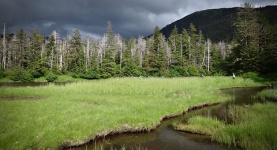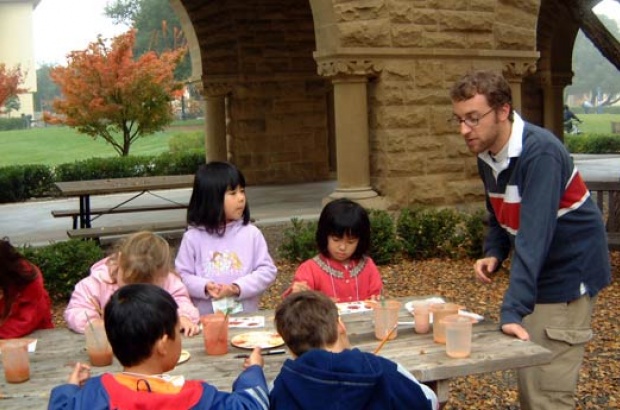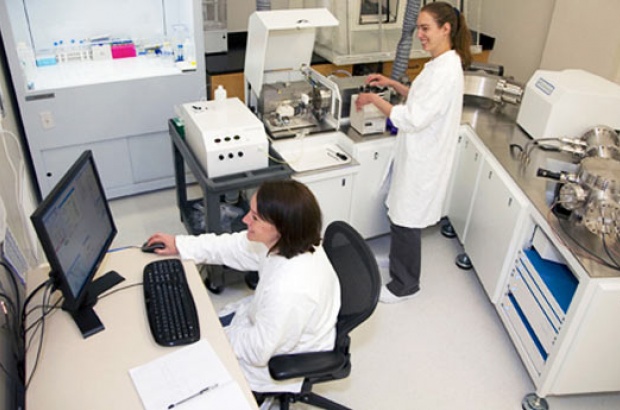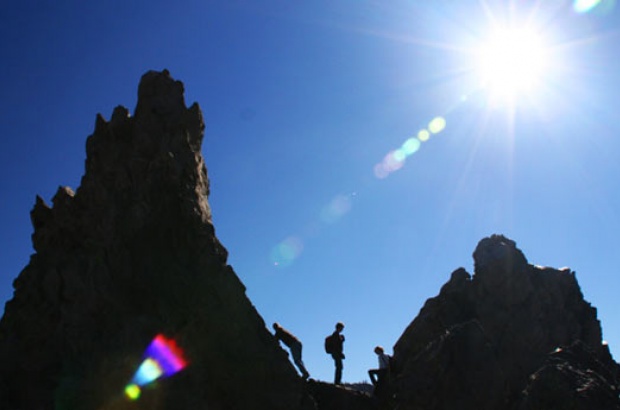Welcome to Stanford Earth Sciences
The Earth sciences have been at the heart of Stanford's academic program since the university's beginnings, nearly 120 years ago. Those early geologists focused on the search for and extraction of natural resources, an important endeavor during that age of expanding industrialization. Today the School of Earth Sciences works to gain a better understanding of our planet's history and its future, the energy and resource base that supports society, geologic hazards that impact a growing population, a changing climate, and the challenge of sustainability.
Learn more.
Helpful Links
Featured News
Carbon capture and storage likely to cause earthquakes
Professors Steven Gorelick and Mark Zoback say earthquakes triggered by underground CO2 storage, while probably too small to cause major damage, could release stored CO2 into the atmosphere.
NASA mission, led by Professor Kevin Arrigo, finds massive algal blooms under Arctic sea ice
A massive phytoplankton bloom has been found underneath the Arctic pack ice in the Chukchi Sea. The under-ice bloom, previously thought impossible, will require a complete rethinking of Arctic ecosystems – and is a potent indicator of global warming's effects on the far north.
Stanford researchers help predict the oceans of the future with a mini-lab
Scientists from Stanford and elsewhere joined to create a mini-lab in Australia's Great Barrier Reef. The device can simulate predicted future ocean conditions – such as rising carbon dioxide levels – and their effects on ecosystems such as coral.
News Clips
In the wild, seeking an answer: what replaces dying trees?
The coastal mountains of southeastern Alaska rise steeply from the Pacific Ocean. Fjords and channels separate over 1,000 islands from the mainland. Dressed like fishermen, we traipse through forests and crawl through brush as weather fronts whip through inlets and rumble along the outer coast.
A crowd-sourcing approach to earthquake detection
It’s 3:32 on a Tuesday afternoon. You’re in the office, staring at your computer but pining for a coffee break. The screen starts to shiver, the desk rumbles and the shaking under your feet sends ripples of recognition up to your brain: It’s an earthquake.
New book on carbon capture by Jennifer Wilcox
Energy Resources Engineering Assistant Professor Jennifer Wilcox approaches the energy science sub-field carbon capture with an interdisciplinary discussion based upon fundamental chemical concepts ranging from thermodynamics, combustion, kinetics, mass transfer, material properties, and the relationship between the chemistry and process of carbon capture technologies.
Writing From the Field

Lauren Oakes, PhD candidate in the Emmett Interdisciplinary Program in Environment and Resources (E-IPER), is writing from the field this summer. Follow her at Green: A Blog About Energy and the Environment on the New York Times website.









Facebook
iTunes U
Twitter
YouTube